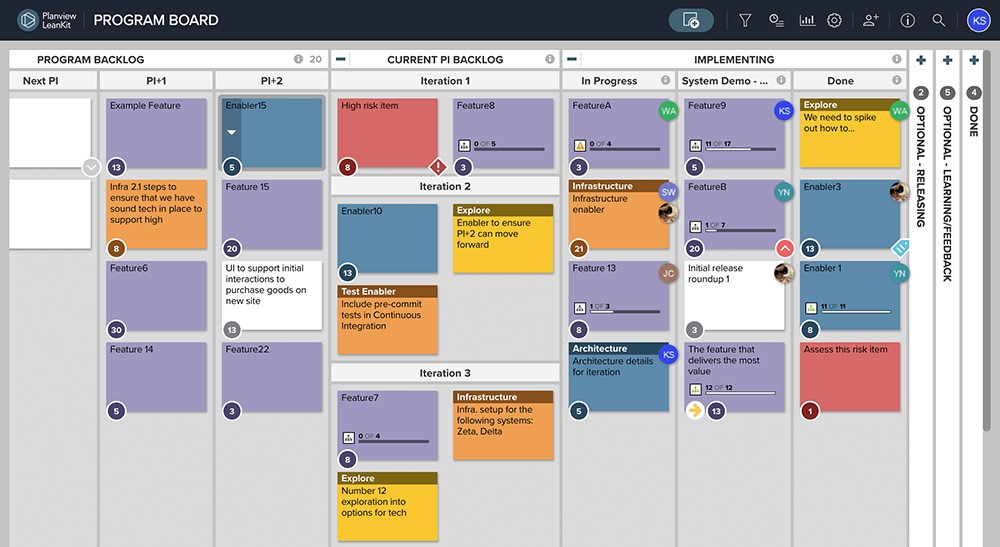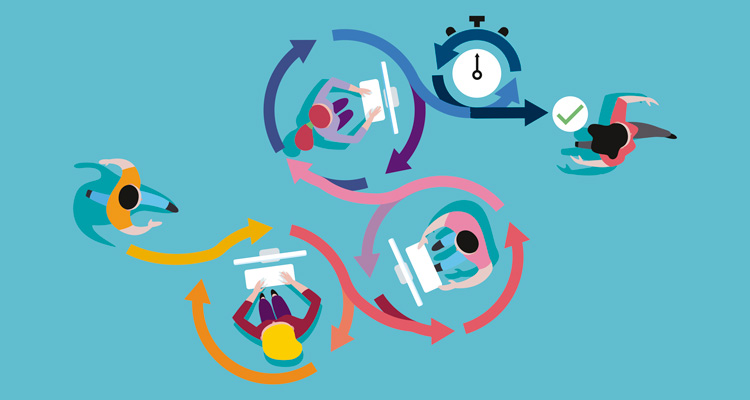
Scaling Agile helps organizations change the way they plan and deliver value to the customer. It allows them to shift to market changes more rapidly and ultimately helps to prime the organization for embracing new ways of working. All of these benefits can help to increase the self-sufficiency of teams across the organization while increasing effectiveness and transparency at every level. In this post, we’ll discuss a method that Lean-Agile organizations can use to bolster their efforts to increase agility. To realize the benefits of scaling Agile and create true differentiation and competitive advantage, organizations must begin to understand, adapt, and scale beyond software development and IT to the rest of the business. Let’s take a look at how Enterprise Kanban can help organizations scale Agile and enable business agility from the teams to the top.
Enterprise Kanban
Scaling Agile across the enterprise promotes visibility and transparency throughout the organization, which allows for the free flow of information within and across the business. Kanban is a workflow management tool that enables just that.
If you’re familiar with Kanban, you’re probably aware of how teams can use Kanban boards to manage their workflows. Kanban aligns well with the overall goals of scaling Agile in ways that other ways of working fall short. Namely, Kanban is purpose-built to support:
- Flexibility
- Continuous delivery
- Visibility into how work is completed and flowing through the teams/organization
- Increased efficiency/continuous improvement through the use of Kanban metrics
- Focus, at every level of the organization
- Value delivery
But how can an enterprise, comprised of a portfolio of products, possibly manage all of its work on one Kanban board?
The short answer is that it can’t—and shouldn’t. Trying to do so would undermine the true value of Kanban, which is allowing teams to track their work in a visual workflow that accurately reflects their unique process.
However, by creating an interconnected portfolio of Kanban boards, enterprises can share information without sacrificing agility or speed. Portfolio-level initiatives can be broken out into value stream/product boards, which can then be broken down further into team-level boards.

Enterprise Kanban tools, like LeanKit, are purpose-built to support this new way of working. Planview AgilePlace can be used to track and manage how work is planned and completed across the portfolio, giving everyone in the organization the ability to track initiatives at the level that makes sense to them: portfolio, value stream, team, or project.
Visibility Across the Portfolio
Enterprise Kanban provides a simple, but not overly simplistic, answer to the complex challenge of managing initiatives across a portfolio of products. Every Kanban board, whether it reflects the work of an entire enterprise or a small team, follows the same basic structure: From left to right, it categorizes work by status—showing whether it is left ‘To Do,’ if it’s currently being completed (Doing), or if it is ‘Done.’
By connecting related cards throughout the enterprise, everyone in the organization can track work at the level that makes sense to them:
- Agile Release Train Engineers and their equivalent non-SAFe® roles can easily see the status of finished, ongoing, and upcoming portfolio-level initiatives, so they know where their attention is needed most.
- At the program level, leaders gain insight into how their teams are progressing toward larger initiatives, along with any impediments or bottlenecks to be remedied.
- Because enterprise Kanban tools like Planview AgilePlace record Lean metrics like lead time, cycle time, and throughput, leaders and members of the Agile PMO can gain insight into focus areas for continuous improvement efforts.
- At the team-level, teams can embrace new ways of working without compromising the visibility required for successful Agile at scale. Teams can continuously improve the design of their Kanban board to better reflect their ever-evolving process, while also evolving how they practice Kanban (through habits like team standups and retrospectives).
Learn More
Want to learn more about the benefits of scaling Agile and the key steps to implementing agility in your organization? Download our eBook “7 Benefits of Scaling Agile”.





